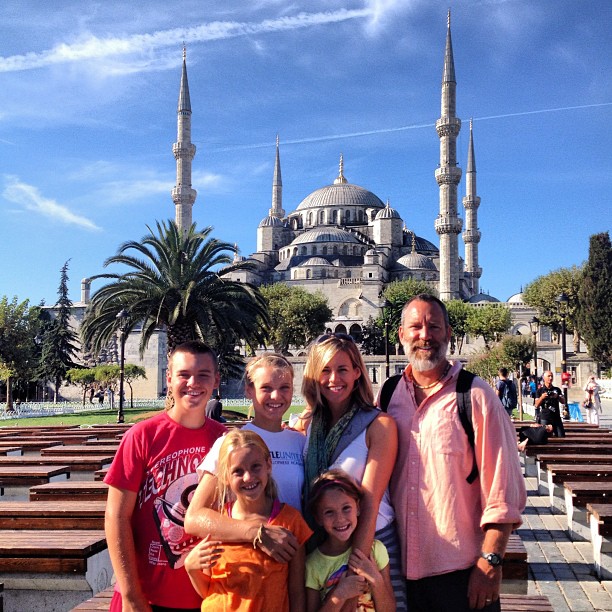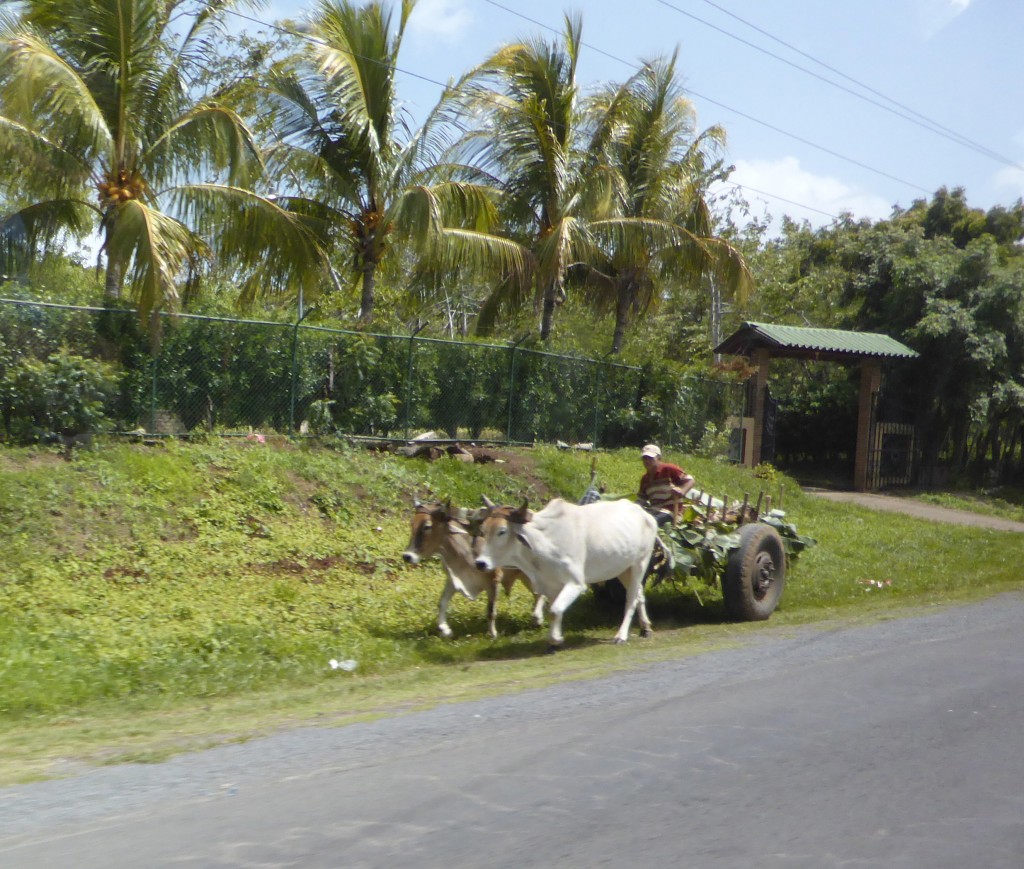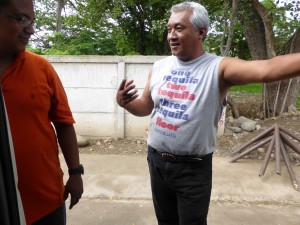Our Kenya part of the safari was a bit rough. If I had flown half way around the globe solely for this safari, I would have been livid after the first day. Yet, we had already spent a week in Kenya at this point and had seen some crazy examples of the driving, bureaucratic inefficiencies and just a general laxness towards keeping a schedule. So, when our driver misread our itinerary and took us on a 7 hour detour on the first day, turning our 4 hour trip to our first tent camp into a grueling 11 hour schlep back and forth across the far reaches of the Masai Mara, I was able to grit my teeth, toss back a cold Tusker, and focus on undoubtedly better days ahead. Plus, our side trip had allowed us to see some of the wildlife en route, such as hyenas, which are seldom seen during the day, and also a baby hippo. But after a few other unscrupulous incidents, including taking on a random passenger on our trip to the border, then leaving us with that passenger at the sketchy border town of Isebania as he sped off on a motorbike taxi (saying his license had been “swapped” with someone else’s), and then lying to us about a few things….well let’s just say I had run out of “Hakuna Matatas” (for those of you who have never watched Lion King, this means ‘no worries’ in Swahili).
Fun memory from Ol Moran tent camp – playing baseball with a young Masai warrior, Daniel. He carved David a new baseball bat, since we had lost the Easton Thunderstick in Italy.
Thankfully, things changed dramatically for the better once we crossed into Tanzania and we continued on with a different tour company. Our driver had been replaced by a competent, honest, kind and funny guide named Simon, with Masai Wanderings. Our decrepit, rickety van that seemed on the verge of coming apart with each bump in the road was a distant memory as we cruised along in a nearly new Land Cruiser with comfy captain’s seats and windows that opened! Tears nearly sprang to my eyes when not only did I see pavement for the first time in 3 days, but Simon reached over and flicked on some music! It could have been the Wiggles for all I cared, I was so happy not to hear the endless rattling and squeaking of the old van.
Some of the first wildlife we spotted in Tanzania – crossing the freeway (PAVED road!!) from the Serengeti to Lake Victoria
Our first stop in Tanzania was at Speke Bay Lodge, on the shores of Lake Victoria. This is the 2nd largest lake in the world, surpassed in size only by Lake Superior. Our little cottages there were right on the sandy beach, surrounded by grass and bougainvillia and other tropical flowers. We had an amazing two nights there. We were unable to swim, due to some parasites in the water (and pesky hippos and crocodiles), but we kept ourselves busy with homework, hikes looking for hippos and birds, some much needed sink-laundry, and our canoe trip to a nearby fishing village. There we met some of the local people, saw how they lived and worked, and were swarmed by a happy band of kids, which we held hands with and carried as we walked. The happy children of Africa are such a blessing; they radiate joy despite the appearance of having so little material comfort – it is like a tonic for self-centeredness. Even writing this, it makes me feel guilty about complaining about the Kenya leg of the safari.
Our canoe guides to the fishing village. Maybe you saw the video of them singing on Jon’s Instagram?
On Nov 12th, we headed out early to do a little game driving on the legendary Serengeti en route to our Nasikia tented camp in the middle of this great National Park. What a blast – the Serengeti was definitely the highlight of our safari! We even saw an up-close hunt, with a pride of 12 lionesses taking down 3 cape-buffalo within a few feet of our vehicle. I know it is nature taking its course, and I thought I really wanted to see a live hunt but I had to stop looking after a few minutes because watching suffering of any kind is not fun. And that cape buffalo did not die quickly or painlessly; lions actually put their mouths over the nose and mouth of the buffalo and suffocate it while others are already beginning to eat the buffalo. On a happier note, the tented camp was rustic and fun – there was a giant pile of Elephant scat right in front of our tent, and we had to have personal escorts back and forth to the tent in case of wild animal encounters (we didn’t have any – but we heard plenty of hyenas and other wildlife scampering around outside our tent after lights out).
The next stop was lush and tropical and equally as legendary Ngorongoro crater. We checked into a gorgeous lodge at the rim of the crater called the Ngoronogoro Sopa Lodge. A few million years ago, this volcano erupted, collapsed on itself, and formed a crater 14 miles in diameter. It is currently home to nearly 25,000 animals, including the big 5 (African Elephant, Black Rhino, Cape Buffalo, Lions and Leopards). Maasai people have been relocated here from the Serengeti to prevent overgrazing of the livestock on the grasslands. We were disappointed to not see a leopard here, and we only saw a Black rhino from afar (beyond the scope of my 20x zoom and our binos), but we once again had front row seats to the most amazing lion-buffalo encounter. Shortly before we arrived, three lionesses had killed a cape buffalo. Right next to the road, like 3 feet from our car, was a giant male lion, the king. The lions had already had their fill, and so we waited to see if the nervous hyena and jackals would come in for a bite and solicit a skirmish with the lions. While that did not come to fruition, our patience paid off in another way. We witnessed a herd of hundreds of Cape Buffalo as they slowly and tentatively made their way towards their fallen comrade, warily keeping their eye on the lions. The lions will not attack a group of buffalo because they are so aggressive when in a large herd, and are capable of trampling a lion. When they finally got close to the half-eaten carcass, they started to lick the wounds in a poignant attempt to heal their friend, and they even pushed their horns against it in an attempt to wake it up. Simon told us that other animals exhibit this behavior, including Elephants and Lions. But most species just will leave a dead herd member behind such as Zebras and Wildebeests, so we were fortunate to get to see this “animal planet” peek into herd behavior played out in real life.
We were so sad to leave the Sopa lodge after only one night (Pool and Wifi!!), but the next stop on the trip was Endoro Lodge, on the outer edge of the crater in another garden like setting. Here we spent two nights, and the day in between was spent hiking to a nearby coffee plantation, local public school, and a brick-making quarry. The biggest surprise at the plantation was that coffee blossoms emit the most intoxicating smell – it rivaled the best tropical flower scents I have encountered in the pacific islands. Our guide, Steve, explained the ripening and harvesting of the beans and how soaking the pods is necessary to extract the bean from the shell, and then the beans are dried for a few weeks before they can be roasted. I had just weaned myself from the ‘bean’ again after having fallen off the wagon in Italy (I quit coffee prior to our departure in July)., and I instantly regretted having tea that morning at breakfast. Next stop was the public school where we enjoyed some singing and dancing with the students and learned about the Tanzanian public school system. One of the main issues that locals have is that kids in primary school (grades K-5) are taught lessons in Swahili, the national language. They don’t start English instruction until (and if) they graduate to secondary school, putting them at a disadvantage in the job market when competing for employment with kids from neighboring countries, such as Kenya where all instruction from baby-class onwards is in English.
Maggie, David and Molly participated in a song and dance presentation during our visit to the Tanzanian public school
The brick quarry – the bricks were formed from clay and water, then stacked, around a central area where a fire was built inside the stack of bricks to bake them. The government provides the quarries for free to poor communities so they can create their own building materials for their huts.
On the way to our last night of lodging, we safaried through Lake Manyara National Park. Our itinerary touted this as a location to see unusual tree-climbing lions. Simon helped reset our expectations by explaining that these lions are rarely seen anymore. Instead, we saw much of the same wildlife (zebra, wildebeest, elephants, giraffes, TONS of baboons and monkeys, and several interesting bird species). We also stopped off and visited a Masai school and village. Each family unit is supported by a herd of cattle and they live in a fenced area called a Boma, which consists of a paddock where the animals sleep safely at night (away from predators) and several huts for the different families. We heard about the many Masai customs, such as the manhood ceremonies, and we partook in a dance and bought some beadwork.
We were the only guests at the Kingongoni Lodge in Arusha, and we were in two separate cottages – they looked like something you would see in a fairytale. Indeed, in the morning as I trekked first up dozens of steps, then across the resort to the cabin where David, Molly, and Maggie were sleeping, I had the most surreal experience. First, I was focused on the tropical blossoms that were scattered about on the path, and then as I passed under one of the many trees, a huge torpedo dropped down and narrowly missed me! The torpedo was actually the unusual looking fruit of the aptly named “Sausage Tree”. These trees were also seen all over the savannahs of the parks we had driven through and they grow huge (12-18″ long by 6 inch diameter) “sausages” that supposedly can be used to make African Beer. But these puppies are HEAVY, and could have easily knocked me out with a direct hit. I knocked on the kids’ door, while watching a steady parade of giant ants all over the walls of their cottage, and then we headed to breakfast.
Simon had spent the night at his home in Arusha but was there the next day to drive us to the airport – we said our sad goodbyes and exchanged contact information. Simon is known at Masai Wanderings as The Family Man, and when families book safaris with this company, they are invariably assigned to him. Well, he lived up to this claim and more: entertaining the kids with his eerily accurate animal calls; exhibiting amazing patience with endless questions; physically holding on to the little girls when they sat atop the land cruiser viewing game; and taking most meals with our family. Plus, you won’t find a guide with better eyes for spotting game or accurate and honest knowledge about birds and animals. We can’t recommend him highly enough!





1 comment
Rebecca
December 17, 2013 at 12:59 am (UTC 0) Link to this comment
Your safari pictures are AMAZING! I almost cried when I read about the Cape buffalo trying to revive their deceased herd member.